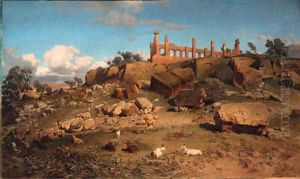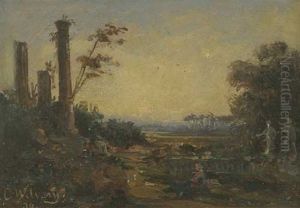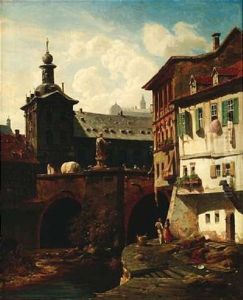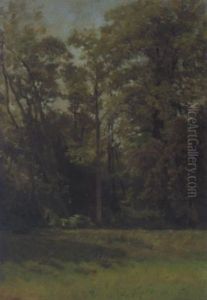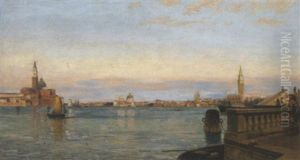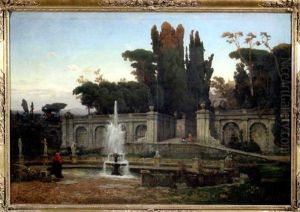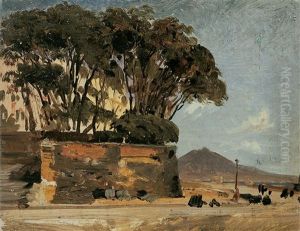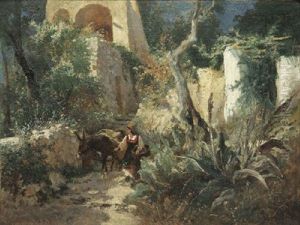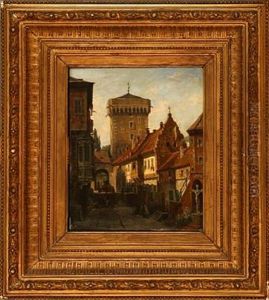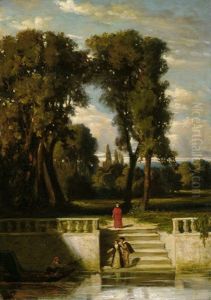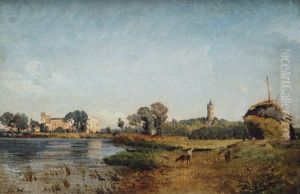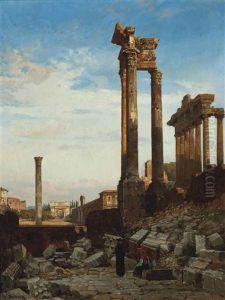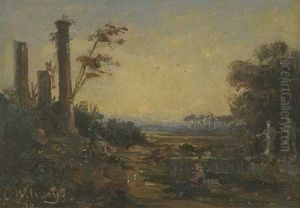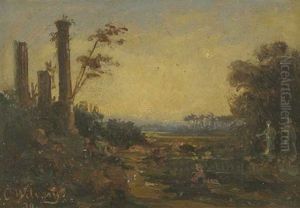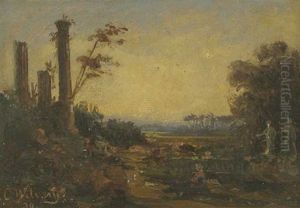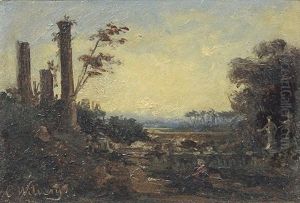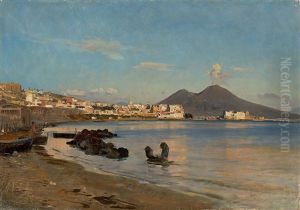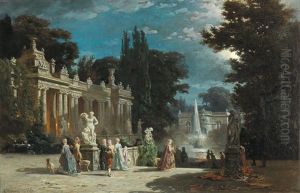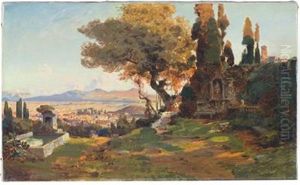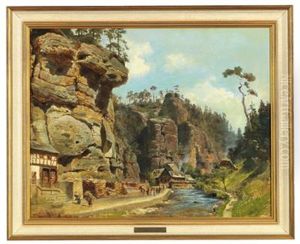Christian Wilberg Paintings
Christian Wilberg was a German painter and architect, born on 9 October 1839 in Havelberg, Prussia. He is noted for his detailed and atmospheric depictions of architectural interiors and landscapes, often imbued with a romantic, sometimes melancholic, sensibility. Wilberg's artistic journey began with his architectural studies, which profoundly influenced his approach to painting, evident in his meticulous attention to structure and space.
In the early stages of his career, Wilberg worked as an architectural painter, a field in which he achieved considerable success and recognition. His works from this period are characterized by their precise detail and the skillful use of light and shadow, which he employed to evoke mood and atmosphere. During the 1870s, Wilberg's focus shifted towards landscape painting, inspired by his travels across Europe, including Italy, where the rich history and vibrant landscapes had a significant impact on his work.
Wilberg's paintings from his later period blend his architectural interests with his love for the landscape, creating compositions where buildings harmoniously coexist within their natural surroundings. His works often feature ruins and historical buildings, set against dramatic skies or serene countrysides, reflecting a romantic fascination with the past.
Despite his relatively short life, Christian Wilberg left behind a legacy of work that continues to be admired for its technical precision and emotive power. He died on 2 June 1882 in Berlin, leaving a lasting impact on the world of German painting and architecture. His works are preserved in various collections and museums, serving as a testament to his skill and vision as an artist.
